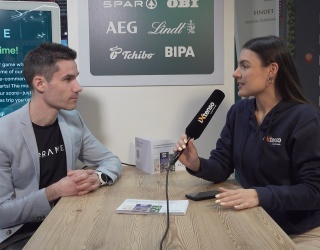SATO Develops Passive UHF RFID On-Steel Logistics Solution
More than 250,000 slabs will be transported every year, and around 100,000 of them to Germany. ThyssenKrupp Steel needs to keep track of every slab in a complex logistics chain that spans continents. While the slabs have to be identified several times en-route, ThyssenKrupp Steel has only a short time window to identify each slab during the receiving (unloading, allocation and reloading) process.
SATO “FlagTagSolution™” for slab logistics
The advantage of RFID, and specifically of UHF RFID, is its capability to read data from a greater distance than barcode without the need for line-of-sight. However, while UHF delivers long read ranges and high data throughput rates, its readability and performance become limited when in close proximity of metal which distort or deflect the radio waves.
SATO “FlagTagSolution™” is a field-proven technology embedded with the UPM Raflatac short dipole Gen 2 inlay, forming a RFID tag in the shape of a “flag” during the encoding, printing and application process thus lifting the RFID inlay (in the “flag”) away from the surface of the product. For this particular application, the “FlagTag™” was customized to meet the requirements of tagging and adhering onto steel slabs. With the “FlagTag™” and its extended read-range, the RFID reader can now uniquely and accurately identify the slabs while they are suspended at times up to three meters from the gantry cranes.
“For passive UHF RFID technology to be considered in an application such as the ThyssenKrupp Steel project which inherently poses many and various challenges, it has to undergo rigorous pilot testing. In the end, the SATO “FlagTagSolution™” had come out on top after undergoing some of the harshest environmental conditions such as seawater, extreme temperature changes, snow and ice as well as bumps and knocks during transit,” said Toshihiro Waki, Managing Director of SATO International. “Working hand in hand with our partners, Accenture and Sybase, SATO has scored yet another RFID deployment success as we continue to do our part in the wider adoption of RFID technology”.










